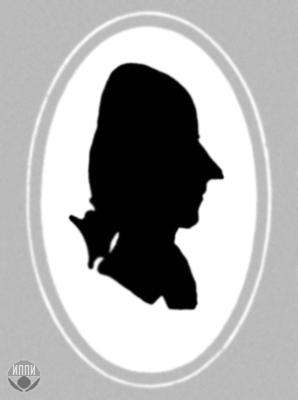Dmitri Alekseyevich Gallitzin facts for kids
Prince Dmitri Alexeievich Gallitzin (born December 21, 1728 – died March 16, 1803) was an important Russian figure. He was a diplomat, which means he represented his country in other nations. He also helped collect art, wrote books, and was a scientist who studied volcanoes and minerals. Dmitri was part of a very old and famous Russian family called the House of Golitsyn. He believed that the United States should be recognized as an independent country. He also helped create a group of countries called the League of Armed Neutrality. Dmitri Gallitzin was one of the first educated Russians to suggest ending serfdom in Russia, which was a system where peasants were tied to the land.
Contents
A Life of Discovery and Diplomacy
Early Life and Important Friendships
Dmitri Gallitzin was born in Saint Petersburg, Russia. His parents were Prince Alexei Ivanovitch Gallitzin and Princess Daria Vassilevna Gagarina. In 1754, he started working for the Collegium of Foreign Affairs, which handled Russia's relationships with other countries.
In 1760, he moved to Paris, France. There, he became friends with many famous thinkers of the time. These included Diderot, Voltaire, d'Alembert, and Claude Adrien Helvétius. These friendships were very important for him.
A Diplomat and Art Collector
After a big change in government in 1762, Catherine the Great appointed him as a special ambassador to France. In 1764, he introduced the famous sculptor Étienne-Maurice Falconet to the empress. He also helped Catherine buy important artworks for the Hermitage Museum. For example, he acquired the famous painting The Return of the Prodigal Son (Rembrandt).
Prince Dmitri also helped Catherine the Great buy Diderot's entire library in 1766. Diderot was not rich, so Catherine bought his 2900 books. She also paid him a good salary to take care of them. Even though Gallitzin was from an Orthodox Russian family, he openly supported new ideas about reason and philosophy. He was also one of the first Russians to promote the ideas of the Physiocrats, who believed that the wealth of nations came from agriculture.
Gallitzin was involved in discussions about Poland. He was called back to Russia to talk about a new job. On his way, he stopped in Aachen, Germany. There, he met Countess Adelheid Amelie von Schmettau. She was the daughter of a Prussian military leader.
Family Life and New Roles
Dmitri and Adelheid got married in Aachen on August 28, 1768. After their wedding, they traveled to Saint Petersburg. Gallitzin continued to buy many paintings for the Hermitage Museum. He bought art from important collections in 1768, 1770, and 1772.
In 1769, Prince Gallitzin was appointed as the ambassador to Holland (the Netherlands). He left Russia and on the way, they stopped in Berlin. Their first child, Princess Marianna, was born there on December 7, 1769. Their second child, Prince Demetrius, was born in The Hague, Holland, on December 22, 1770.
In 1771, he bought more paintings after a collector named Gerrit Braamcamp died. However, the valuable art cargo on a ship called Vrouw Maria was lost in a storm near Finland. About two years later, in 1773, the ambassador and his wife hosted Diderot at their home for two months. Diderot was on his way to Saint Petersburg. On his way back in 1774, Diderot spent half a year in the Dutch Republic.
In the same year, Dmitri and his wife decided to live separately. Princess Adelheid moved to a country house between The Hague and Scheveningen. She wanted to raise her children in a way that the philosopher J.J. Rousseau had suggested in his book Emile, or On Education. She often met with the philosopher Frans Hemsterhuis, who was her teacher and advisor. Princess Wilhelmina of Orange, who was married to the Dutch leader William V, often visited Adelheid with her oldest son.
In 1776, Gallitzin traveled to London. In 1778, the sculptor Étienne Maurice Falconet visited The Hague. He stayed for a long time at Gallitzin's home. Another sculptor, Marie-Anne Collot, joined him in July 1779.
In July 1782, Tsarevich Paul (who would later become Tsar) and his wife visited The Hague. Gallitzin welcomed them. In December 1782, Gallitzin had to leave The Hague. His skills as a diplomat during the First League of Armed Neutrality were not as highly valued as his scientific interests. In 1783, he left Turin and returned to the Dutch Republic.
A Passion for Science
Gallitzin owned one of the biggest electrostatic machines of his time. He designed it himself. He also wrote letters to famous scientists like Comte de Buffon. Prince Gallitzin was elected to the Academy of Sciences Leopoldina in 1795. He became a Fellow of the Royal Society in London on April 19, 1798. In the summer of 1799, Golitsyn was elected president of the Mineralogical Society of Jena.
Even when he was very sick, the prince took his work seriously. Before he died, Golitsyn gave his large collection of minerals to the Mineralogical Museum in Jena. The collection weighed 1850 kilograms (about 4078 pounds) and arrived in December 1802. He asked for the samples to be arranged using the system developed by René Just Haüy.
Achievements and Honors
Dmitri Gallitzin was recognized by many important scientific and academic groups:
- Member of the director of the Dutch Society of Sciences (1777)
- Honorary member of the St. Petersburg Academy of Sciences (1778)
- Foreign Member of the Brussels Academy of Sciences (1778)
- Foreign member of the Swedish Academy of Sciences (1788)
- Foreign member of the Berlin Academy of Sciences (1793)
- Member of the German Academy of Natural Scientists (Leopoldina, Halle) under the name of Maecenas III (1795)
- Foreign member of the Royal Society of London (1798)
- A member of the St. Petersburg Free Economic Society (1798)
- President of Jena Mineralogical Society (1799–1803)



